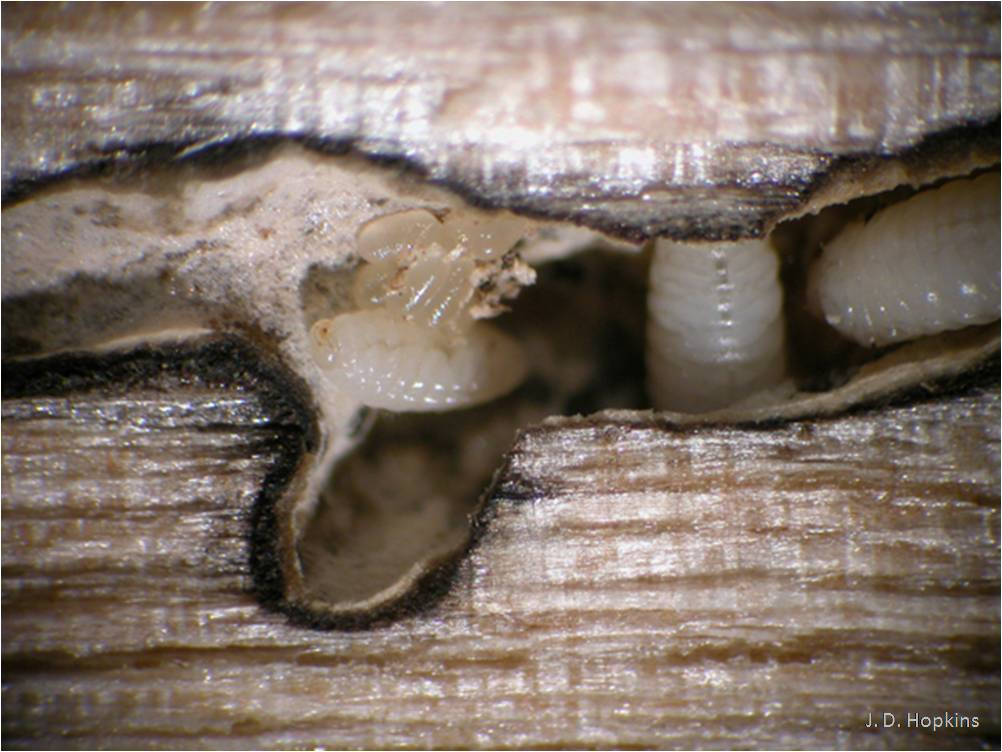It
is an undeniable fact that as a species we are the dominant animal on the
planet. We compliment ourselves on the fact that this dominance is due to our intelligence and ingenuity, the occurrence of
which is thought to have arisen from the increased nutrition and resource availability
and release from foraging time brought about by the agricultural revolution. The
revolution has fuelled the quest for knowledge that makes our species unique; particularly
knowledge of other life - be it terrestrial or beyond. Most people would agree
that there are other animals on the planet that show forms of intelligence
close to our own, but in my experience perceptions tend to be restricted to analogous mammalian groups. It is interesting, then, to discover that this agricultural
behaviour has actually evolved nine other times in the animal kingdom, in each
case among the insects. Having begun so grandiose in my introduction, it
is to the ants, termites and ambrosia beetles we now look.
 |
With 220 species of ants from the tribe Attini ('Attine' ants), 3400 species of
ambrosia beetles (a subfamily of weevil, Scolytinae) and 330 termite species
from the Macrotermitinae subfamily, our species gets few innovation points for
our farming behaviour. However as with all convergent evolution, the same
behaviour is achieved in slightly different ways. Where we are above-ground plant
growers, all these species are growers of fungus away from light, and where we maintain other culinary prospects, these all these species rely on their cultivated fungi for their only source of sustenance.
Ant fungiculturalists (for
which you can also visit this blog) use a variety of fresh organic substrates
on which to grow fungi, from leaves and flowers to seeds and wood. The specific
fungus used by each colony is passed on to daughter queen ants before they leave
the nest. They transport a sample of the cultivar in pouches present in their
mouth-parts and use it to establish their own gardens. Similarly, termite fungiculturalists are specialised to a single genus of fungi, that of Termitomyces, and their life cycle is synchronised with the fruiting of the fungus. Special chambers are allocated inside termite mounds for fungal growth, and they grow their gardens on dead or partially decomposing plant material. Ambrosia beetles tunnel into the wood of trees and maintain the fungal growth that occurs on the excavated walls. Like the ants, these beetles also transport their fungus from old to colonising areas, but instead of mouth pouches, the beetle uses specialised pouches along their body. However, unlike the Attini and termites, an ambrosia beetle's fungal garden is cared for only by the colonising female, which means that if she dies, the fungi will overrun her brood. All three types of insect gardens are also a diverse culture of bacteria and yeasts.
 |
For
50 million years of agricultural success to our 10 thousand years, you might
expect these farmers to be experts on agricultural sustainability. So, to
maintain our intelligence, we must ask: what can we learn from these insects?
 |
Plant
mono-cultures are often identified as one of the weaker aspects of our own husbandry
of the land, as minimal diversity opens systems to more effective removal by a
single pathogen. Yet all farming insects use mono-cultures. They minimise the
problems of such systems using a combination of strategies: isolating and
sealing gardens underground to reduce potential for infection, continuously monitoring
crops using a myriad of workers, maintaining genetic diversity of the crops by
trading cultivars amongst populations, and managing microbes that suppress crop
diseases.
Of these techniques, microbial management of plants seems the most
practical and likely option for improving our own agricultural systems.
Microbes are known to increase pathogen resistance in some of our own crops, but
the microbial composition of the soil is difficult to control. Prior to
planting, insects farmers will partially or completely sterilise the substrate
into which they plant their fungi. Designing our own agricultural systems to
more effectively take advantage of beneficial microbes is a step in the same
direction as these green tarsal-clawed gardeners.
It seems that, while our search for intelligent life continues, intelligent lifestyles are right
under our toes.
I cannot recommend The Evolution of Agriculture in Insects by Mueller, Gerardo, Aanen, Six and Schultz enough. And thanks to xkcd for the cartoon catalyst.
I cannot recommend The Evolution of Agriculture in Insects by Mueller, Gerardo, Aanen, Six and Schultz enough. And thanks to xkcd for the cartoon catalyst.














